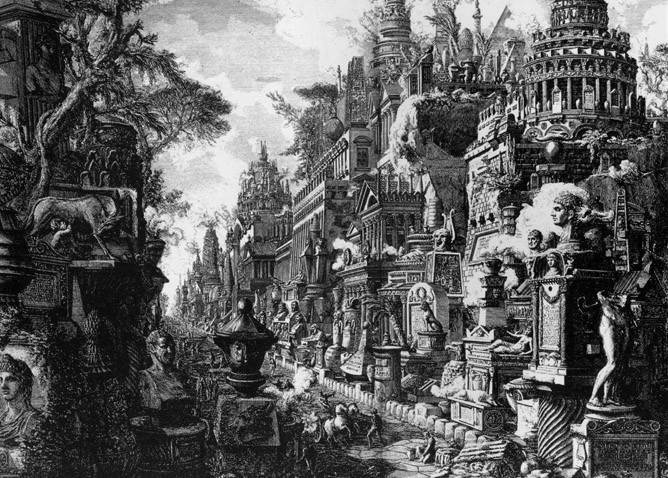JAMES BOSWELL’S GRAND TOUR
Beginning late in the 17th century, The Grand Tour—the extended journey through Europe undertaken by young British gentlemen to finish off their education—became popular and fashionable for many young British sons of the aristocracy. Typically, the young men already had a thorough grounding in Greek and Latin literature and some interest in art. Two to three years spent living abroad, accompanied by their tutors, offered them the opportunity to absorb the art and cultures they were visiting and improve their language skills. An added benefit was the greater freedom the young travellers experienced on the Continent, where their involvement in drinking, gaming and romantic liaisons posed as little inconvenience to their families as possible.
In terms of sheer reading pleasure and attention to detail, perhaps no accounting of The Grand Tour is more fascinating than that of James Boswell.
Boswell, best known as the author of The Life of Samuel Johnson, what many consider the greatest biography in the English language, first visited London from his native Edinburgh in 1760 at the age of 20. The city’s culture—and its women—dazzled him and he began a three-year struggle with his father, an eminent judge, to remain permanently in the capital. Father and son ultimately worked out a compromise and just before his second London visit in 1762 where he was first introduced to Dr. Johnson in a bookseller’s back parlor, Boswell began keeping a diary, London Journal, 1762-1763, a practice he would continue for 33 years.
From these voluminous entries The Journals, 1762-95, we are able to vicariously follow Boswell’s adventures through Germany, Switzerland and Italy as he embarks on his Grand Tour. Travel in the 18th century was both difficult and expensive, and travellers typically carried little money. Instead, they took letters of credit from their London banks, which they then presented in major cities. After a year of studying law in gloomy Utrecht, the sunny climes and independence must have been irresistible to the twenty-four year old Boswell as he departed for Holland in 1764, escorted off by none other than Johnson himself. Whether due to cost or preference, he travelled without a tutor. The freedom this afforded him and Boswell’s own somewhat pompous self-image only adds to the appeal of his journal entries.
Yet Boswell did truly possess a genuine interest in the sites of European learning and classical antiquity. After leaving Johnson behind, he set his sights on and aggressively pursued obtaining interviews with two other great thinkers, Jean Jacques Rousseau and Voltaire, both of whom were living in exile near Geneva. Although ill, Rousseau agreed to dine with him. Boswell, always the able conversationalist, rose enough to the occasion—talking of books, religion, art and of course, women—that he was invited to return. Voltaire was slightly less accommodating, but Boswell’s earnestness ultimately earned him the great writer’s grudging respect.
Boswell’s journals record these unforgettable dialogues in detail, but he also gives equal attention to less scholarly intentions. He wrote down everything that happened to him, what everyone said, what they ate, what they drank, how they dressed, how they travelled, along with plenty of descriptions of his meetings with all the pretty maids, wealthy wives, and available streetwalkers.
Boswell then continued his tour down to Italy, where he was the first Englishman to visit the interior of Corsica. The account of his visit here describes this little known land to Europeans in the 18th century in meticulous detail. As well as discussing the history, politics and culture of Corsica, Boswell writes about the land, the animals, the language and the people, even comparing the small stature and hard working nature of the Corsicans to the Highland Scots. His meeting with Pasquale di Paoli, the island’s leader, results in a lifelong friendship and helps to later spread Paoli’s revolutionary fervor to England through pamphlets and other writings.
By 1766, Boswell’s Grand Tour was nearing completion. As a favor to Rousseau, he agreed to accompany Rousseau’s mistress to London before returning to Scotland to take his final law exam. “When a man is tired of London he is tired of life,” Johnson famously said. Boswell, apparently never tired, and his short stop in London allowed for a brief affair with the philosopher’s mistress!
A little over ten years later, in 1773, Boswell finally succeeded, after many tries, in enticing his famous friend Dr. Johnson, who was by then in his mid-sixties, to accompany him on a tour through Scotland. Setting out from Edinburgh, the two men skirted the eastern and northeastern coasts of Scotland, passing through St. Andrews, Aberdeen and Inverness, and then on into the highlands where they spent several weeks on various islands in the Hebrides, including Skye, Coll and Mull.
Our own grand tour of Scotland and the Hebrides follows much of the same route that Boswell and Johnson trekked, and includes a stay at the Taychreggan Hotel in Kilchrenan, the actual site where the pair stopped for refreshment over 200 years ago. Boswell’s account of the journey, Journal of a Tour to the Hebrides, became the precursor to his famous biography. Whether experienced in person or from the comfort of your living room, it might just be the perfect accompaniment for interested readers to recreate such a storied trip.
FURTHER READING
Boswell, The Life of Johnson, 1791. Many editions.
Boswell on the Grand Tour: Germany and Switzerland, 1764. McGraw-Hill, 1953. Edited by Frederick Pottle.
Boswell on the Grand Tour: Italy, Corsica and France, 1765 – 1766. McGraw-Hill, 1955. Edited by Frank Brady & Frederick Pottle.
Boswell, A Journal of a Tour to the Hebrides with Samuel Johnson, LL.D., and Johnson, A Journey to the Western Islands of Scotland
THE GRAND TOUR IN ITALY
Beginning late in the 17th century, long before travelers came to be known as tourists, foreigners began making what was later called The Grand Tour of Europe. In the beginning, The Grand Tour represented a kind of finishing school for young men of means, primarily among the British upper crust. It was how one learned to become a gentleman, setting the stage for a leadership role. To be educated was to be cultured, making the Grand Tour a mark of attainment in one’s classical education. The Grand Tour familiarized these travelers with the great works of art and architecture from ancient times through the Renaissance.
The Grand Tour was the ultimate in luxury travel, with servants to handle the luggage and scholarly tutors to provide education and insights on a vast array of topics. The earliest of grand tour itineraries included a stay in Paris, travel through Italy, usually only as far south as Rome, and some time in Germany.
The accounts of some grand tourists became literary classics including two volumes by Scottish writer James Boswell and the Italian journeys of Johann Wolfgang Goethe, though Goethe waited until age thirty-eight to embark and set out from Weimar, not London.
The original Grand Tour was a long, leisurely trip, lasting weeks and sometimes months or years. Until the Age of Enlightenment when the idea of public museums took hold, the great works of art resided mostly in the homes of aristocrats. Without the aid of telephone, email or fax, organizing such excursions was a feat in itself! Then of course there were the logistics of transport in horse-drawn carriages and sailing vessels. Once rail lines began connecting the major cities of Europe, the speed, cost and efficiency of this new mode of transportation put The Grand Tour within reach of the middle class and eventually Americans.
With modern air travel, The Grand Tour has become shorter still. Nonetheless, this trip of a lifetime is as popular as ever, especially among mature travelers who think of such experiences as part of a larger bucket list of places and events. For many a traveler, getting to the great cultural destinations of the Western world is a component of a life well-lived.
While guidebooks have made possible a self-directed version of The Grand Tour, such publications are no substitute for being escorted by knowledgeable guides steeped in cultural history. The Grand Tours we offer are meticulously planned for modest-sized private groups. We match culturally-rich itineraries with a wide choice of European and U.S. destinations, combined with first class lodgings and memorable cuisine. Because of our longstanding relationships and years of experience in the cultural travel business, we are able to obtain highly sought-after tickets to important arts events, gain access to private collections and have the know-how to eliminate the hassle of travel. Our itineraries also offer plenty of leisure time for contemplation, making our trips ideal for the independent- minded traveler, unaccustomed to group travel. The Grand Tour isn’t one of our specialties. It is our raison d’etre.
THE GRAND TOUR TRAVEL COMPANY organizes private cultural tours to Europe and the U.S. for public broadcasting stations and other non-profit organizations. We work closely with each station to provide custom itineraries that best fit your format, mission and goals. Our tours can feature music—major performances of classical or jazz; history or current affairs; art & architecture; and cuisine, and include NPR and PBS personalities.
For more information, contact us at info (at) thegrandtour.com
Or visit our web site at www.thegrandtour.com
The Grand Tour Travel Company
PO Box 274, Peterborough, NH 03458
Tel: 800. 727.2995
Fax: 603.532.8851



